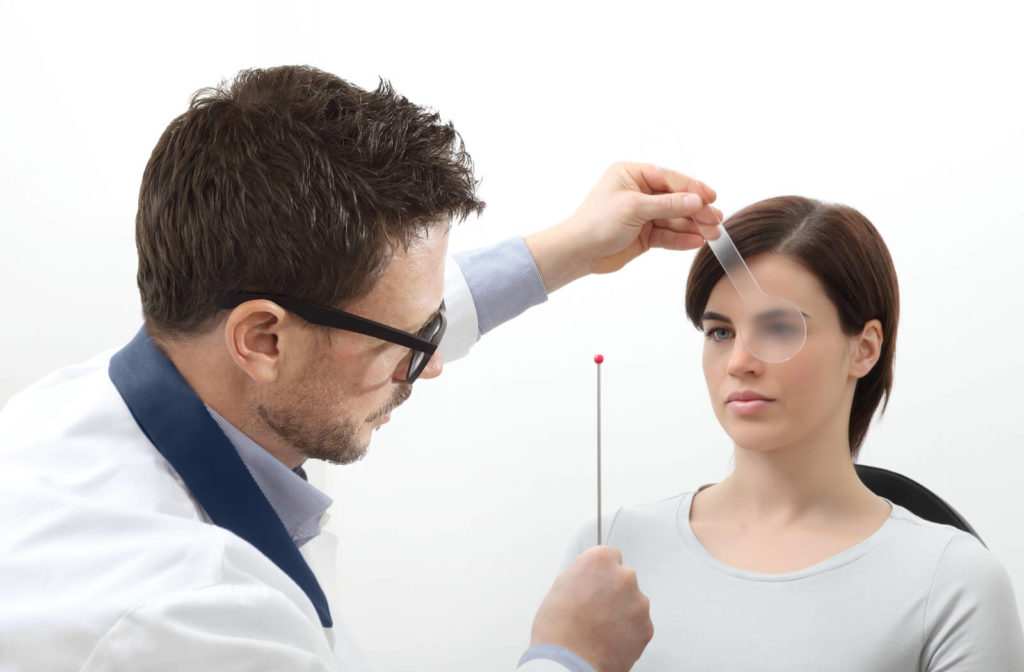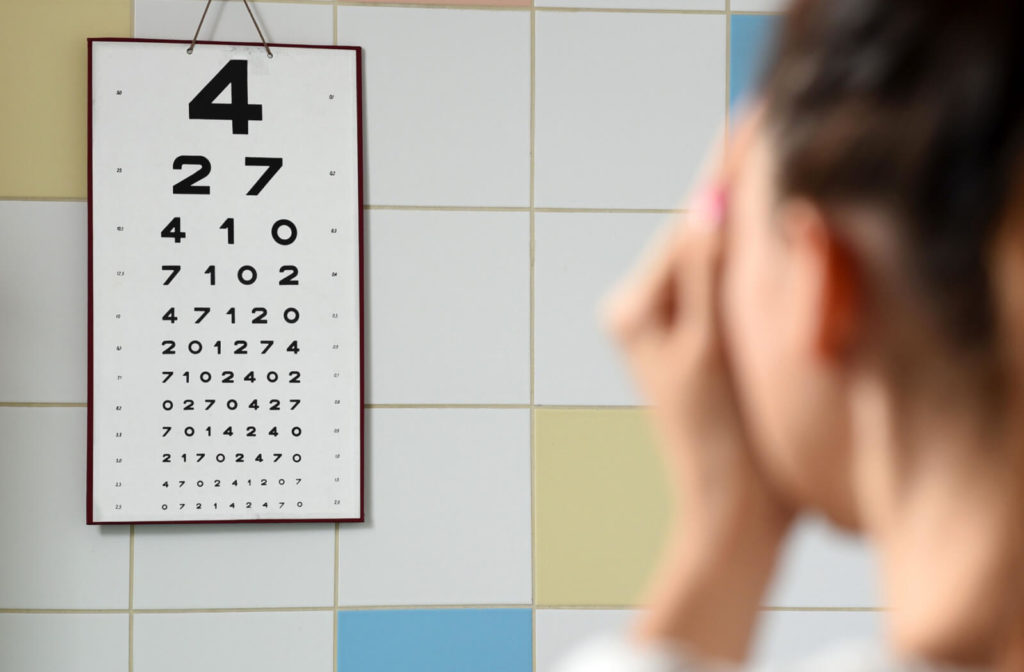We get it, you’re busy. Finding time to schedule your routine eye exam can seem nearly impossible when juggling work, family, and life’s many other demands. But dedicating the time to get an eye exam every year is the best way to ensure you have healthy vision that lasts a lifetime.
A comprehensive eye exam will usually take 30-60 minutes, but the length of an eye exam can vary depending on your history with your optometrist and your unique eye care needs. A routine eye exam involves much more than just a vision test and can include testing for a range of eye diseases.
Your eye care provider can provide specific details about your appointment. If you have questions about an upcoming eye exam or would like to book an appointment, please do not hesitate to contact our team at Crum Optometric Group.
What Factors Impact the Length of an Eye Exam?
While 30-60 minutes is what you can typically expect for an eye exam, there are a number of factors that can impact how long you spend in your eye doctor’s office, including the factors described below.
Type of Eye Exam
Routine eye exams are just one of the services offered by your optometrist’s office. While you should visit your eye doctor every year or two for a routine eye exam, there are other reasons you may visit, including eye care emergencies or to seek treatment for conditions like dry eyes and digital eye strain.
These types of specialty eye care appointments may take less time than a full comprehensive eye exam, as your optometrist is focusing on one specific eye care need.
Your Age
An eye exam for an infant may not take the same amount of time as an exam for an older adult. While the basics of a routine eye exam remain the same for each age group, adults over 65 years old may require some additional testing to screen for age-related eye conditions like macular degeneration and glaucoma. Older adults and individuals with mobility issues may also require some extra time and accommodation to complete their eye exams.
Your Health & Vision History
An eye exam can vary in length because the appointment may be tailored to your unique vision needs. An eye exam for someone without vision challenges may not take the same amount of time as an exam for someone with more complex visual needs.
Having pre-existing health conditions such as diabetes and high blood pressure may also make your appointment last a bit longer, as your optometrist may need to do some additional testing to monitor for eye conditions like diabetic retinopathy and glaucoma.

What to Expect During Your Eye Exam
Getting an eye exam can be intimidating, especially if it has been a while since you last visited your eye doctor. While vision care is constantly evolving, we can break down what to generally expect during your routine eye exam.
- Visual Acuity Test: This test measures how far you can see. Your optometrist will ask you to read letters on a chart, with the letters gradually getting smaller. Your optometrist may test both eyes together and each eye individually.
- Refraction Assessment: This test determines what prescription of corrective lenses you may need. A refractive error occurs when light does not properly focus on the back of your eye, causing objects to appear blurry. Corrective lenses such as glasses or contact lenses can be used to correct a refractive error and provide clear vision.
- Visual Field Test: This test measures the full width of what you can see without moving your eyes. This test will evaluate the fullness of your field of vision by measuring your response to objects, images, or lights in your peripheral vision.
- Slit-Lamp Examination: This test allows your optometrist to examine parts of the eye like your eyelids, lashes, cornea, iris, lens, and fluid chamber between your cornea and iris. A slit lamp is a microscope that magnifies the front of your eye and uses a bright line of light to illuminate it, making it possible for your optometrist to visually assess the different parts of your eye.
- Retinal Assessment: This test allows your optometrist to examine the back of your eye, including your retina, optic disk, and retinal blood vessels. A retinal assessment may involve retinal imaging or a dilated eye exam. By looking at the health of your retina, your optometrist can screen for the early signs of serious eye conditions like diabetic retinopathy.
Your eye exam may be different depending on your unique vision care needs. Your optometrist can walk you through each part of your routine eye exam so that you know what to expect during your visit.
How to Prepare For Your Exam
In most cases, there is not much that you need to do to prepare for an eye exam.
If you are a new patient, you may need to provide additional information about your health and vision history to receive personalized eye care. This may include information on your family history of conditions like diabetes and high blood pressure and a complete list of any current medications you are taking.
If you have not already provided your eye care team with your medical history prior to your eye exam, your appointment may be slightly longer to ensure that your optometrist has a complete picture of your health.
If you wear corrective lenses, you should plan to bring your most recent glasses or contact lenses to your appointment. This can help your optometrist determine if your prescription has changed during the refraction assessment portion of your eye exam.
Dilated Eye Exams
If your eye exam requires your eyes to be dilated, make sure to bring sunglasses to your appointment, as your eyes may be sensitive to light for a few hours after your exam. Dilation may also cause your vision to be blurry after your exam, so it is often a good idea to arrange a ride instead of driving yourself to and from the appointment.
Dilated eye exams help your optometrist check for eye conditions such as diabetic retinopathy, glaucoma, and age-related macular degeneration. It is more common for individuals living with diabetes and seniors to need regular dilated eye exams. A dilated eye exam may be booked as a follow-up appointment, and your optometrist should tell you if dilation will be a part of your appointment so that you can plan ahead.
Making Time for an Eye Exam
Taking a proactive approach to your vision care is the best way to ensure you have healthy vision as you age. Spending one hour (give or take) at an eye exam every year is one of the best habits you can have to support your vision.
Book an appointment for your next eye exam today to get vision care that meets your needs from Crum Optometric Group.





